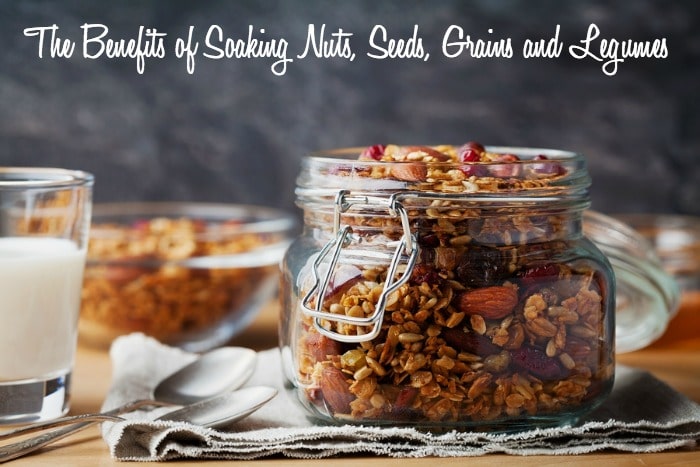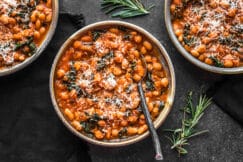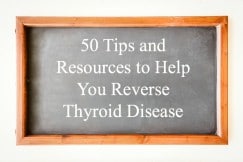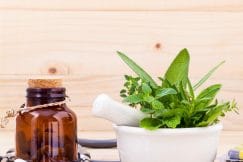
Humans have eaten grains, legumes, nuts and seeds for thousands of years. Traditionally, people soaked these foods before cooking them to promote easier to digestion. Somewhere along the way, we forgot about this important step and now consume these foods without the proper preparation.
All grains, legumes, nuts and seeds contain anti-nutrients that require neutralization. Nuts and seeds contain enzyme inhibitors that block digestion – potentially causing negative effects on the health of the body. Grains and legumes contain phytic acid that robs the body of important minerals like magnesium, calcium, zinc, copper and iron.
Over time, when we consume these foods without properly preparing them, serious health issues like leaky gut, irritable bowel syndrome (IBS), and autoimmune problems can arise.
Here at Deliciously Organic, we often talk about avoiding grains; but after you’ve taken measures to heal your digestive system, you can usually add healthy, soaked grains back into your diet. This can be especially helpful for people dealing with adrenal issues.
Soaking these foods may sound intimidating, but it’s actually very easy! It basically involves putting the food in a bowl, covering it with water, adding a neutralizer, letting it sit at room temperature, and then draining.
It takes a little forethought, but your body will certainly thank you!
Soaking Grains:
If you need to avoid grains right now because you’re on a healing diet, just save this info for later.
Rice and Millet: Place 2 cups of grain into a large mixing bowl and cover with 2 cups of warm water. Stir in 2 tablespoons of fresh lemon juice or apple cider vinegar. Leave the bowl at room temperature for 7 hours. Drain, rinse, and then cook as usual.
Quinoa: Place 2 cups of quinoa into a large mixing bowl and cover with 6 cups of water. Stir in 1 tablespoon of fresh lemon juice or apple cider vinegar. Leave at room temperature for 24 hours. Drain, rinse, and then cook as usual.
All other grains: Place 2 cups of grain into a large mixing bowl and cover with 2 cups of warm water. Stir in 2 tablespoons of fresh lemon juice or apple cider vinegar. Leave the bowl at room temperature for 12-24 hours. Drain, rinse, and then cook as usual, or dry in a dehydrator.
Soaking Legumes:
For Kidney, Pinto, Navy, White, and Black Beans: Place 2 cups of beans into a large mixing bowl and cover with warm water. Stir in 2 pinches of baking soda. Leave at room temperature and soak for at least 18-24 hours total. Every 7 hours, drain the beans, cover with warm water again and stir in another 2 pinches of baking soda.
Drain, rinse, and cook in a large pot or slow cooker. Avoid using a pressure cooker as the extremely high temperature and pressure will denature the protein and can destroy other nutrients in the legumes.
Lentils: Place 2 cups of lentils into a large mixing bowl and cover with warm water. Stir in 2 tablespoons of lemon juice or apple cider vinegar. Leave at room temperature and soak for at least 7 hours.
Drain, rinse, and cook in a large pot or slow cooker. Avoid using a pressure cooker as the extremely high temperature and pressure will denature the protein and can destroy other nutrients in the legumes.
Garbanzo Beans: Place 2 cups of beans into a large mixing bowl and cover with warm water. Stir in 2 tablespoons of fresh lemon juice or apple cider vinegar. Leave at room temperature and soak for at least 24 hours.
Drain, rinse, and cook in a large pot or slow cooker. Avoid using a pressure cooker as the extremely high temperature and pressure will denature the protein and can destroy other nutrients in the legumes.
Soaking Nuts and Seeds:
All nuts: Place 4 cups of raw, shelled nuts into a large mixing bowl. Cover with water and stir in 1 tablespoon of Celtic sea salt. Soak (see chart below for specific soaking times). Drain and then place in a dehydrator, or spread the nuts on a large baking sheet lined with unbleached parchment paper and dehydrate them in a warm oven (under 150ºF) for 12 to 24 hours. I usually let the nuts dehydrate in my oven overnight.
Almonds: 7-8 hours
Brazil Nuts: 4-6 hours
Cashews: 3-6 hours
Flaxseeds: 7-8 hours
Hazelnuts: 7-8 hours
Macadamia Nuts: 6-7 hours
Pecans: 7 hours
Pine Nuts: 7 hours
Pistachios: 4 hours
Pumpkin Seeds: 7-8 hours
Sesame Seeds: 7-8 hours
Sunflower Seeds: 4 hours
Walnuts: 6 hours
Source: Biodynamic Wellness





63 Comments